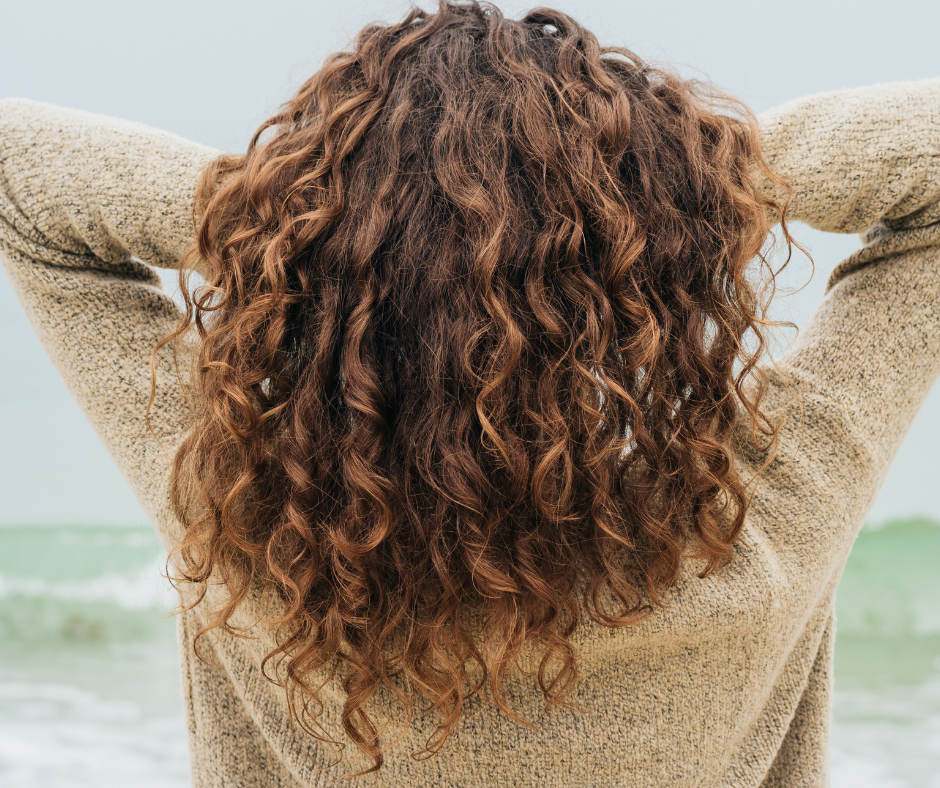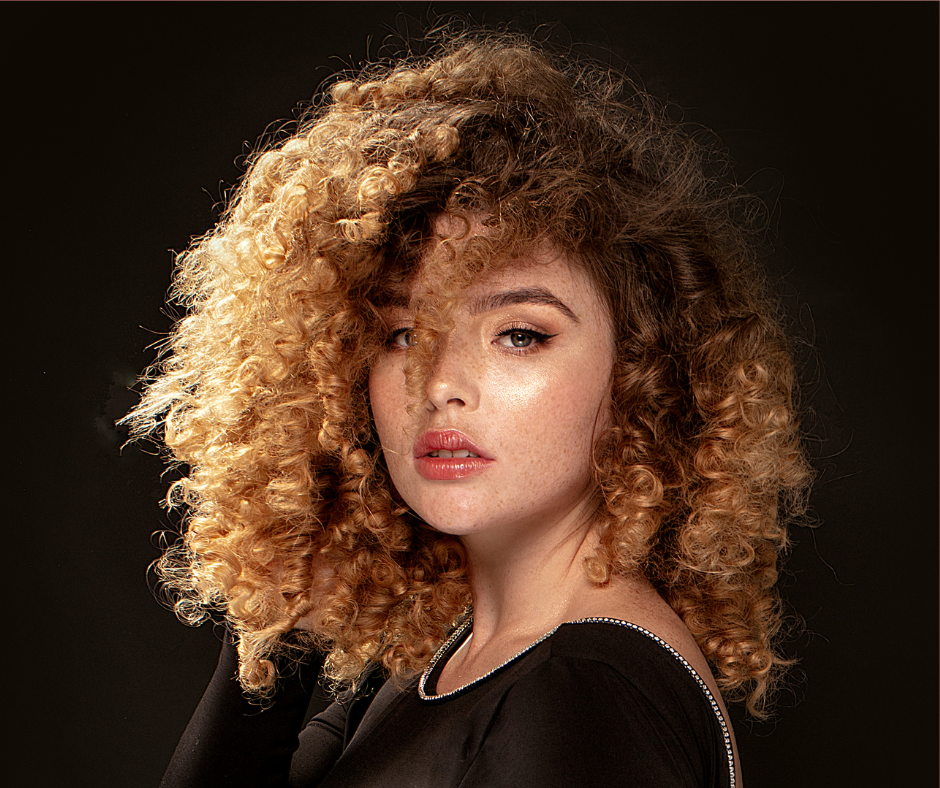You've just heard about or hopped on the texture spray bandwagon, but can't seem to figure out its appeal or how to get the best results from it. That's where we come in!
We will go over everything you need to know about texturizing spray, the science behind it, the application process that is guaranteed to produce amazing results. Learn why it is something that will elevate your hair's appearance and a product you shouldn't do without if it aligns with your hair goals.
Let's get into it!
What Is a Texturizing Spray?

A texturizing spray is a beauty in a bottle. It gives off that “not doing too much with my curls and yet it looks effortless” kind of look. A texturizing spray is formulated to add volume, texture, and a little bit of shine to your hair without making it look too styled and put together. Texturizing sprays are really popular during summer months - especially - as people try to achieve beachy waves. They're also a fantastic choice as a pick-me-up for anyone whose curls fall flat before the end of the day.
Aren't you curious about what's in that bottle that gives such an outcome? Well, here's the gist—or, should we say, the science behind how texturizing sprays work.
Texturizing spray comprises five main active components:
- Volatile solvents such as alcohol: These guys have just one job, which we would call a carrier. They help distribute the product evenly and evaporate soon enough, leaving behind the active ingredients. Alcohols may be fatty or drying - most curly products contain fatty (moisturizing) alcohols but a bit of drying alcohol can help with volume.
- Polymers: The role of polymers is pretty simple; they provide hold by forming a thin film around the hair strands. Examples of such polymers include polyvinylpyrrolidone (PVP) and acrylate copolymer.
- Starch or silica particles: These help with absorbing oils and moisture from the hair. The result enhances texture and gives that matte finish. This is also a key component in dry shampoo, which is why dry shampoo and texturizing spray are often compared.
- Sea salt: Now, this is the special ingredient! It gives the hair grit and that tousled, beachy look. Innersense Organic Beauty's I Create Waves Salt Spray is perfect for this because it gives that day-at-the-beach finish without being too crunchy.
- Conditioning agent: Texture spray contains alcohol, which can be drying, so the conditioning agent provides the right amount of balance by adding a bit of moisture and ensuring the hair doesn't become stiff or too dry.

How to Use a Texturizing Spray
To get the best out of your texturizing spray, you should follow through with this step-by-step guide:
1. Prep Your Hair
The very first thing you should do is ensure that your hair is clean. Texturizing spray won't work well on hair that is badly in need of a wash. Your hair should be freshly washed and dried.
This is the biggest difference between a texturizing spray and a dry shampoo, which is often designed specifically to be used on second day - a.k.a. dirty or unwashed - hair.
2. Shake the Bottle
Make it a habit to shake your hair care bottles before use as this allows a proper mix of all the ingredients, ensuring you get the best out of it. You’ll be surprised the effect missing this one little step can have on your results.
3. Section Your Hair
Divide your hair into small sections to allow the product to be evenly distributed. You can use clips to hold the sections in place for a more thorough process. Sectioning your hair will help achieve a piece-y look.
4. Spray and Shake It Out
Spray texturizing spray all over your hair, section by section, focusing on the roots for volume and the lengths for texture. Hold up a section of hair and lightly spray from a distance, like nearly an arm's length away. This will disperse the product and keep it lightweight instead of highly concentrated in one area.
Let's go over it again - Lift hair, lengthen arm, drop hair. This technique works wonders especially for thin or fine hair. The distance is key, as it allows the product to be more lightweight, reducing the possibility of weighing the hair down. Take a look at Puff.Me Dry Texture Spray; it is airy and incredibly lightweight.
After application, don’t brush your hair! Instead, work it through with your hands. Run your hands through or over your hair and give it a slight shake. You could also scrunch your hair by cupping your curls upwards and giving them a good squeeze. Doing this a couple of times can add more texture to the lengths of your hair.
Extra Tips for Using a Texturizing Spray:
- If your main goal is volume, concentrate on the roots when applying the spray. You can also lift sections and apply underneath, then give a good shake with your fingers.
- To achieve that beachy look or the “I just woke up like this but my curls look absolutely gorgeous”, here’s what you can do the night before: spritz a texture spray like Innersense Organic Beauty's I Create Waves Salt Spray into damp hair, gather your hair into a ponytail (or two), and braid ponytail into a loose, simple three-strand braid by separating your ponytail into three sections and stacking them over each other. This will - of course - alter your curl pattern a little bit, but it will help with the beachy waves look so many people strive for in the summer. After the braiding process, go to bed with your satin bonnet or MoonstoneSeven Satin Sleeper. In the morning, gently unravel the braids and run your hands through or over your hair to shake out the results and be ready to be stunned!
Texturizing Spray Vs. Other Texturizers
Not all texturizers come in spray format. They could also take a form such as a cream, powder, gel, wax, or mousse. The key difference between these products is your preference and what works best for your hair.

Texturizing Cream: Products like the Innersense Organic Beauty Inner Peace Whipped Creme Texturizer or AG's Dry Lift Texture and Volume Paste work best with short to medium-length hair and are great for thick, curly hair prone to dryness. Their creamy consistency adds moisture along with texture.
Texturizing Powder: Very lightweight, powders are great for adding volume and definition at the roots. Dry shampoo can often be used as a texturizing powder but will add more volume than texture overall. Try Hair Dance's Volumizing Dry Shampoo.
Texturizing Wax and Gel: These are heavier than sprays but also add volume and definition, helping create more structured styles. They're very popular for shorter hair.
Texturizing Mousse: Provides a firmer hold than texturizing spray and gives good definition. You should definitely check out the The Doux Mousse Def Texture Foam if this appeals to you!

How Does a Texturizing Spray Differ from a Hair Spray?
Hair sprays have long been in the game. They are used as a finishing touch after styling and hair spray is typically applied to the entire head of hair to hold and preserve the shape of the hairstyle for much longer. Texturizing sprays may be applied to sections of hair or the entire head based on your goals.
This is where the difference comes in: while texturizing spray can give hold to your curls, its power lies in its ability to give your hair texture and volume but not necessarily long-lasting hold. If you want hold, you can always apply a bit of hair spray over top of a texturizing spray.
What Makes a Texturizing Spray Different from Dry Shampoo?
Dry shampoos were specially formulated to absorb oils and moisture from the hair and help prolong the wash day for a bit longer. This is perfect for those with very active lifestyles, who work out a lot, or for individuals with greasy and oily scalps, as well as those who avoid wetting their hair, or for those who may have mobility issues so don't wash as often.
Dry shampoos do bear similarities with texturizing spray in that, in addition to their primary properties, they are able to add a little bit of volume. However, that's pretty much where the similarities end.
Need further advice on choosing the right products or troubleshooting a new item added to your routine? Send us an email at products@curlwarehouse.com or visit us in store.








